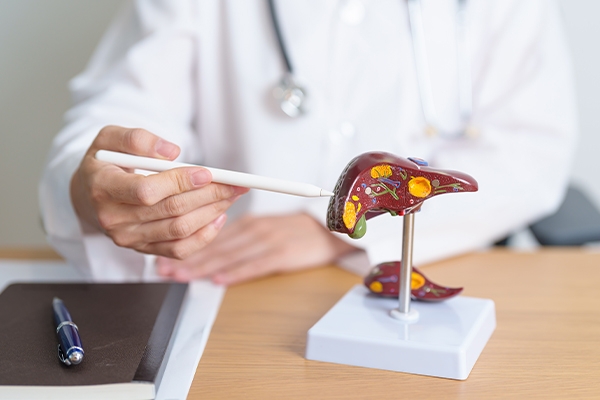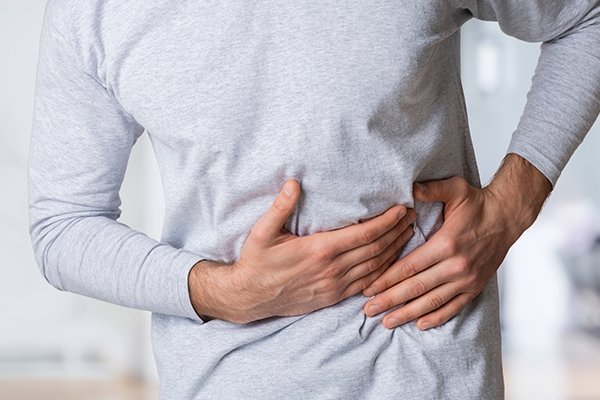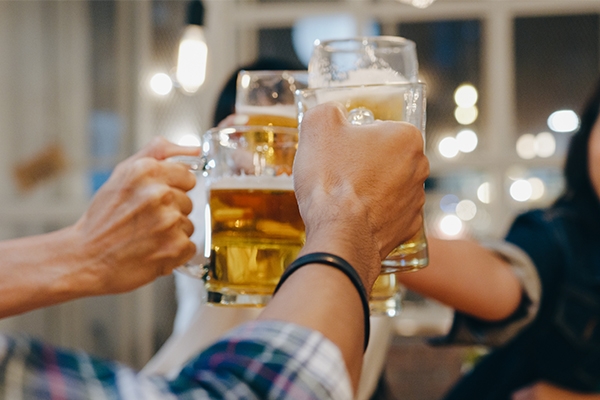How Unhealthy Habits Fuel Liver Cancer

The liver plays a role in destroying toxins in the body. But if it is destroyed by cancer, the body will become a mess. In Indonesia, liver cancer cases are among the top five cancers (Globocan, 2020).
The liver is positioned in the upper belly, near the intestines, gallbladder, and pancreas. It has four lobes: two in the front and two small ones in the back (not visible).
Inside, there are small tubes known as intrahepatic bile ducts, which transport bile fluid into the liver.
The liver is enormous for its purpose in the human body. Its functions include removing "waste" or metabolic products, absorbing nutrients, and repairing wounds.
The liver also produces bile, which aids in the digestion of fats, vitamins, and other nutrients.
If you're wondering why you can still function well hours after eating or while fasting, thank your liver. It aids in the storage of extra glucose in the body, maintains metabolism, and generates energy when you do not eat.
Types of liver cancer
When cancer develops in the liver, it damages liver cells (hepatocytes), which affects the organ's overall function. The origin of the cancer cells determines whether liver cancer is primary or secondary.
Primary liver cancer originates in liver cells. Secondary liver cancer occurs when cancer cells from another organ spread to and proliferate in the liver. For instance, from the chest, lungs, or big intestine.
The most prevalent kinds of primary liver cancer are:
1. Hepatocellular carcinoma (HCC)
It is often known as hepatoma and is the most prevalent kind. HCC typically affects people with chronic hepatitis or cirrhosis. Cirrhosis can be caused by a hepatitis B or C infection, long-term alcohol consumption, or liver illness owing to fat deposits.
2. Cholangiocarcinoma
It is also known as bile duct cancer, which is caused by cells in the bile ducts. Intrahepatic cancer occurs inside the duct; extrahepatic cancer occurs outside the duct.
3. Liver angiosarcoma
This cancer is extremely hazardous because it develops in the blood arteries of the liver. Cancer develops quickly, therefore it is frequently identified only when it has progressed to an advanced stage. This form of cancer is uncommon.
4. Hepatoblastoma
This cancer is extremely rare, yet it primarily affects children, particularly those under the age of three. Hepatoblastoma can be treated with surgery and chemotherapy in about 70% of cases.
Liver cancer symptoms

In the early stages, liver cancer is usually undetectable and unnoticeable. As cancer cells grow, new patients will have the following symptoms:
- Right upper abdominal discomfort.
- Swollen stomach.
- A hard bump on the right, beneath the ribs.
- Pain in the right shoulder blade or in the back.
- Jaundice (a yellowing of the skin and sclera).
- Bruises and bleeds easily.
- Unusual fatigue.
- Nausea and vomiting.
- Loss of appetite.
- Sudden and abrupt weight reduction.
The symptoms listed above could suggest another condition. As a result, consult with your doctor to obtain an accurate diagnosis.
Causes and risk factors

Another fact about liver cancer is that men suffer from this type of HCC more often than women. The following are the risk factors:
1. Hepatitis B virus (HBV) infection
HBV is transmitted through the interchange of blood, semen, and other body fluids. It can even be passed from mother to baby during delivery. Tools, such as syringes, that are used interchangeably can also be a medium for HBV transmission.
HBV infection causes liver inflammation and triggers the emergence and development of cancer. HBV vaccination can prevent infection effectively.
2. Hepatitis C virus (HCV) infection
HCV is transmitted in the same way as HBV. Sexual intercourse with infected people, needle sharing, and body fluid exchange between mothers and newborns, as well as blood transfusions and organ transplants, are all possible.
Chronic infections can raise the risk of liver cancer. To avoid this, follow your doctor's advice and receive the HCV vaccine.
3. Cirrhosis
Cirrhosis develops when scar tissue replaces healthy liver tissue. Scar tissue blocks blood flow through the liver, limiting its performance. The leading causes of cirrhosis include prolonged drinking and chronic hepatitis infections.
People with HCV-related cirrhosis are more likely to develop liver cancer than those with HBV-related cirrhosis or who are alcoholics.
4. Excessive alcohol intake
In relation to the previous point, consuming alcohol excessively—frequently—increases the risk of cirrhosis. Especially if you have cirrhosis.
However, in some circumstances, liver cancer can occur in habitual drinkers who do not have cirrhosis. Alcoholics who are infected with HBV or HCV have a higher chance of developing liver cancer.
5. Aflatoxin B1
This chemical is a toxin produced by mold that grows on foods such as corn and beans that are stored in hot and humid conditions.
Consuming foods containing aflatoxin B1 increases the risk of developing liver cancer. As a result, avoid consuming foods or beverages that have mold growing on them.
6. Nonalcoholic Steatohepatitis (NASH)
If you don't drink alcohol yet enjoy eating high-fat foods, be cautious. You are at risk for developing fatty liver cells. NASH is the most severe type of nonalcoholic fatty liver disease.
This disorder can induce inflammation and liver cell damage in some persons. Having cirrhosis-related NASH raises the risk of developing liver cancer.
7. Smoke
Excessive smoking increases the risk of developing liver cancer.
8. Other conditions
The following health factors enhance the risk of liver cancer:
- Untreated descending hemochromatosis.
- Alpha-1 Antitrypsin Deficiency
- Glycogen Storage Disease
- Porphyria Cutanea Tarda
- Wilson's Disease
It is important to highlight that not everyone who has one or more of the risk factors listed above will develop liver cancer. Because this malignancy can grow even in the absence of risk factors.
Maintain your liver health by eating nutritious foods, avoiding or limiting fatty foods and alcoholic beverages, and exercising on a regular basis.



